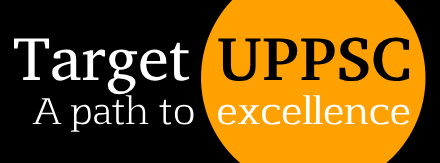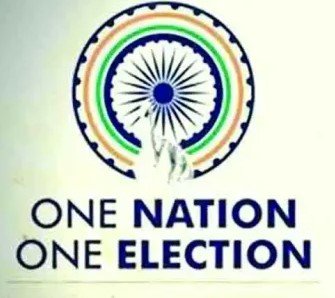GS P5 (History, Polity, Governance...), Indian Polity & The Constitution of India, UPSC
Q.1. Examine the need for electoral reforms as suggested by various committees with particular reference to “one nation – one election” principle. [UPSC 2024 GS P-2]
The need for electoral reforms in India has been widely acknowledged by various committees, experts, and stakeholders. These reforms aim to enhance transparency, efficiency, and fairness in the electoral process. One significant recommendation that has emerged in recent years is the “One Nation – One Election” principle, which suggests simultaneous elections to the Lok Sabha (the central parliament) and all state legislative assemblies. Here’s an examination of the broader need for electoral reforms and the specific relevance of the “One Nation – One Election” principle:
Key Electoral Reforms Suggested by Committees:
- Dinesh Goswami Committee (1990):
- Focused on electoral reforms and highlighted issues like curbing the use of black money, controlling excessive election expenditure, and preventing criminalization of politics.
- Suggested a review of the anti-defection law and measures for preventing booth capturing and rigging.
- Law Commission of India (255th Report, 2015):
- Advocated for reforms to strengthen the electoral process by addressing criminalization in politics, introducing transparency in party funding, and ensuring internal democracy within political parties.
- Recommended state funding of elections to reduce corruption.
- Venkatachaliah Committee (2002):
- Focused on reviewing the working of the Constitution and made recommendations to curb electoral malpractices and improve the quality of candidates.
- Suggested electoral reforms such as reducing the influence of money and muscle power.
- Election Commission of India (ECI):
- Has consistently pushed for reforms to curb voter bribery, increase voter participation, and promote transparency in electoral financing.
Need for Electoral Reforms:
- Reducing the Cost of Elections:
- The cost of conducting frequent elections is extremely high, both financially and administratively. The need for regular deployment of security forces, election officers, and logistics places a heavy burden on public finances.
- Electoral reforms like “One Nation – One Election” aim to reduce this financial strain by consolidating election schedules.
- Curbing Political Instability and Frequent Model Code of Conduct (MCC):
- The frequent imposition of the Model Code of Conduct, due to staggered elections across states, hampers governance as policymakers avoid making decisions to avoid controversy.
- Simultaneous elections can reduce this disruption, ensuring that governance continues without frequent halts.
- Reducing Electoral Malpractices:
- Many committees have highlighted the growing issue of money power, muscle power, and criminalization in elections. Electoral reforms focused on campaign finance, transparency, and voter awareness can help curb these malpractices.
- Voter Fatigue:
- Frequent elections lead to voter fatigue and lower voter turnout in certain cases. One comprehensive electoral exercise could potentially boost voter engagement.
- Governance and Stability:
- Frequent elections contribute to a fragmented political scenario, leading to short-term policy making. By aligning national and state elections, “One Nation – One Election” could promote long-term policy goals and stable governance.
“One Nation – One Election” Principle:
- Concept:
- The idea of “One Nation – One Election” proposes conducting elections to the Lok Sabha and all State Legislative Assemblies simultaneously, either on a fixed schedule or through necessary constitutional amendments.
- This concept has been backed by several political leaders, including the Prime Minister, and has been a topic of extensive debate.
- Rationale:
- Financial Efficiency: Consolidating elections would drastically cut down on costs, both for the government and political parties.
- Administrative Efficiency: The Election Commission would find it easier to deploy resources effectively in a single exercise rather than staggered elections across states.
- Continuity in Governance: As mentioned earlier, the imposition of the MCC disrupts governance frequently. A synchronized election cycle would eliminate this issue, allowing the government to implement policies without interruptions.
- Challenges:
- Constitutional and Legal Amendments: The Constitution currently provides for different durations and timelines for both state assemblies and the Lok Sabha. Aligning election cycles would require significant amendments, possibly raising legal and federal concerns.
- Logistical Feasibility: Conducting simultaneous elections on such a massive scale would be a herculean task, requiring extensive coordination between central and state election authorities.
- Impact on Regional Parties: Regional issues could get sidelined in a national election, possibly marginalizing regional parties that thrive on state-specific agendas.
- Recommendations of Committees on One Nation – One Election:
- Law Commission of India (170th Report, 1999): Recommended holding simultaneous elections as a solution to the problem of frequent elections.
- Parliamentary Standing Committee (2015): Discussed the idea and suggested a phased implementation of simultaneous elections, acknowledging the complexity but recognizing the potential benefits.
- NITI Aayog (2017 Discussion Paper): Suggested amending constitutional provisions to make simultaneous elections possible, with the aim of promoting stability in governance.
Conclusion:
Electoral reforms in India are vital to address challenges such as excessive election spending, voter fatigue, criminalization of politics, and disruptions in governance due to the MCC. The “One Nation – One Election” principle, while offering potential solutions for many of these issues, also faces significant logistical, constitutional, and political challenges. A careful phased implementation, after detailed discussions among political stakeholders, could make the electoral process more efficient and transparent in the long term.


